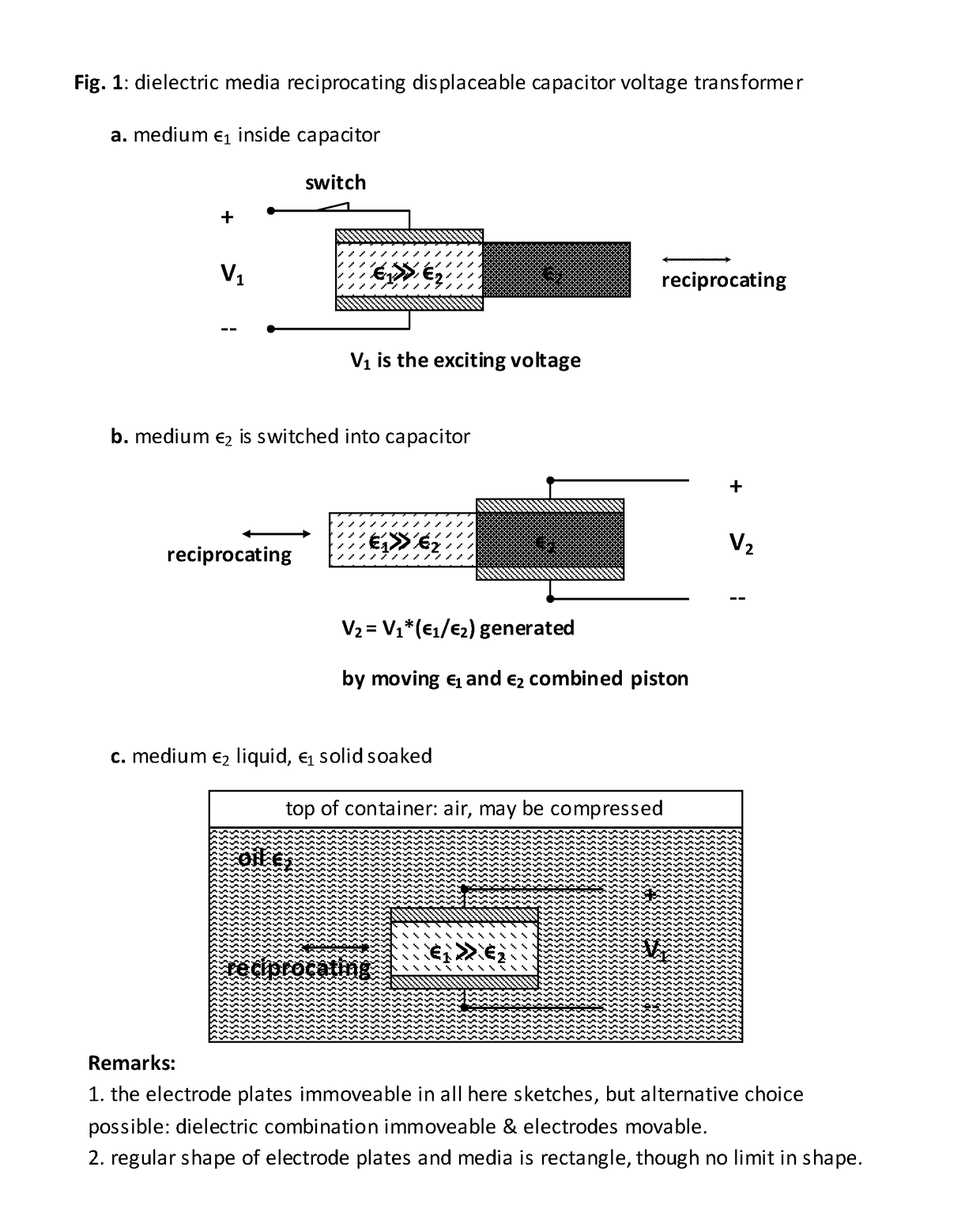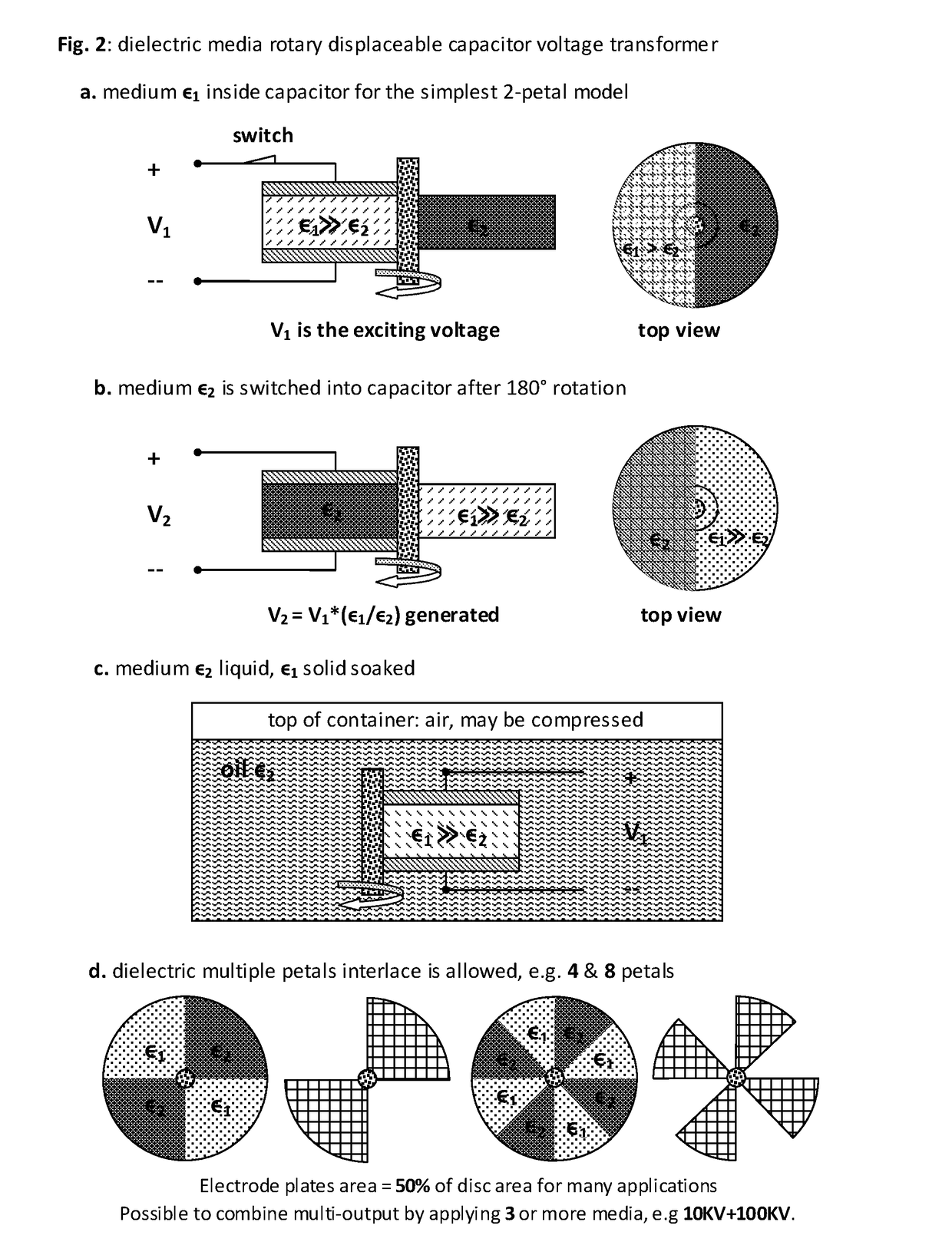Dielectric blade comb piston unlimited voltage generator, fusor and more
a technology of unlimited voltage and generator, which is applied in the direction of generator/motor, electric apparatus, etc., can solve the problems of low efficiency in recharge and discharge, low efficiency of recharging and discharge, and the inability to voltage ante up, etc., and achieves the effect of reducing the number of high-voltage rated rectifier diodes or high-voltage rated devices
- Summary
- Abstract
- Description
- Claims
- Application Information
AI Technical Summary
Benefits of technology
Problems solved by technology
Method used
Image
Examples
Embodiment Construction
[0277]The Root Invention #1—General Dielectric Piston Unlimited High Voltage Generator
[0278]In general, when dielectric medium in capacitor is switched from high permittivity ∈1 to low one ∈2, such a displacement needs input of mechanic energy, and in turn this mechanic energy will be converted to electrostatic energy, thus voltage will be multiplied greatly by ∈1 / ∈2>>1, though no charging current is infused to capacitor.
[0279]As no limit is imposed on ∈1 / ∈2 and many stages amplification is allowed, so there is no limit for the possible high voltage output, provided no breakdown occurs inside all dielectric media.
[0280]By employing new generation of dielectric materials with extreme high breakdown strength, plus providing as ample as needed space, GV level is not hard to reach, in contrast, with the prior art, even the record high voltage is merely under 50 MV.
[0281]With such a breakthrough invention, a virgin domain is looming large, enabling countless potentialities that may subve...
PUM
 Login to View More
Login to View More Abstract
Description
Claims
Application Information
 Login to View More
Login to View More - R&D
- Intellectual Property
- Life Sciences
- Materials
- Tech Scout
- Unparalleled Data Quality
- Higher Quality Content
- 60% Fewer Hallucinations
Browse by: Latest US Patents, China's latest patents, Technical Efficacy Thesaurus, Application Domain, Technology Topic, Popular Technical Reports.
© 2025 PatSnap. All rights reserved.Legal|Privacy policy|Modern Slavery Act Transparency Statement|Sitemap|About US| Contact US: help@patsnap.com



